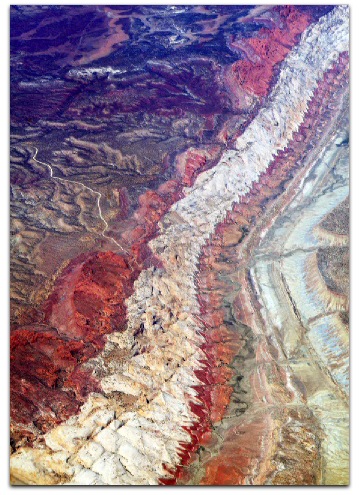I shot more than 500 pictures out the pitted and blistered windows of the United Airbus 320 I took from Chicago to Orange County, day before yesterday. The shot above is one of them. It’s part of this series here, all of Capitol Reef National Park in Utah.
What I’m hoping is that somebody somewhere has troubled to identify all the rock strata on display here. If not, I’ll do it eventually. Meanwhile, I’ll at least tell you that the lightest color rock — the spine of the “reef” that stands out most in the larger feature known locally as the Waterpocket Fold — is Navajo Sandstone. Read more about it at that last link.

Leave a Reply